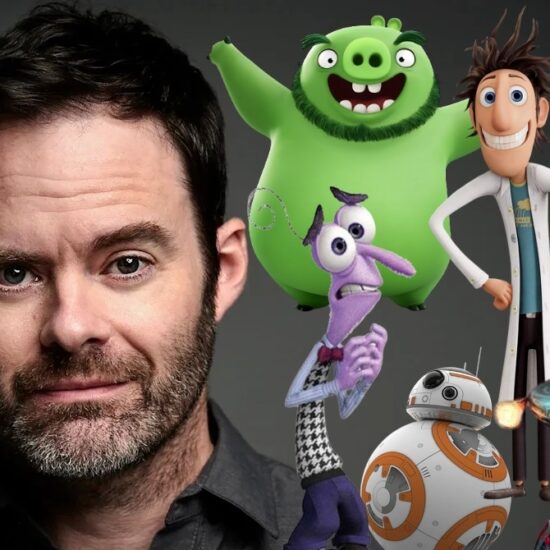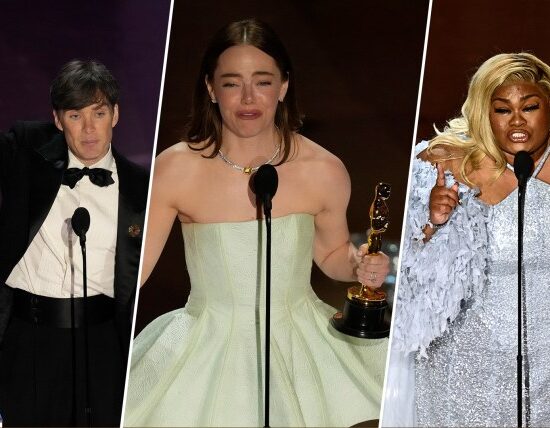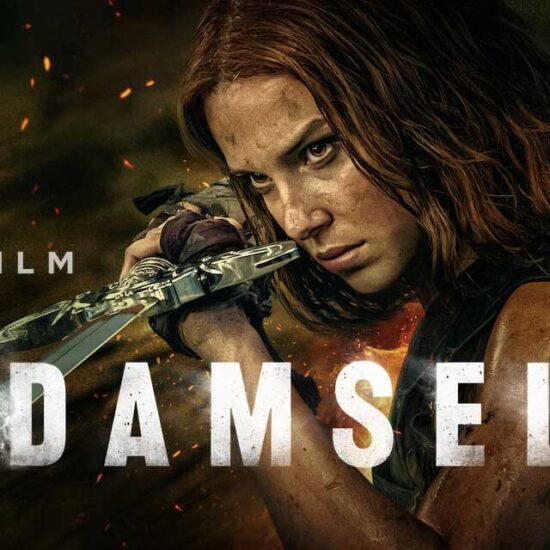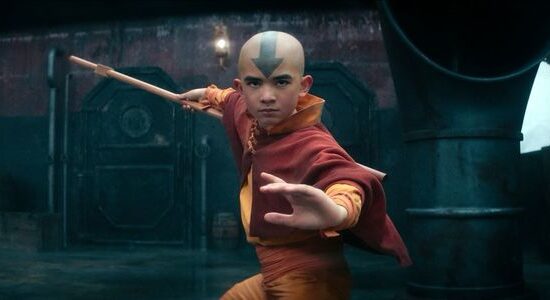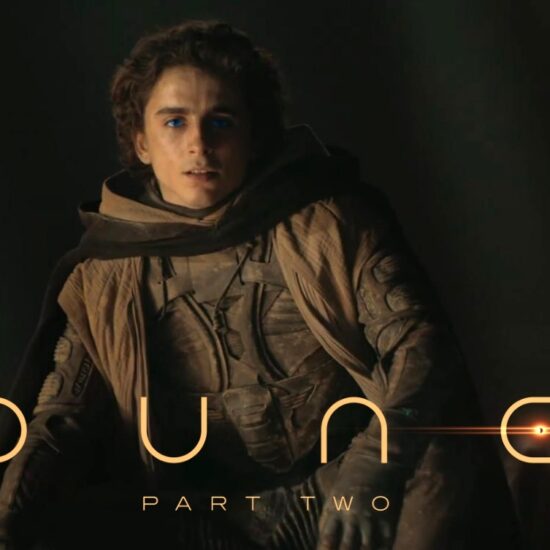
Under the Banner of Heaven was a personal story for showrunner Dustin Lance Black — not in the obvious, more extreme ways, but in growing up Mormon and noticing the similarities between the real Brenda Wright Lafferty and his mother.
The FX series, which is based on the true-crime novel of the same name by Jon Krakauer, follows the aftermath of the 1984 brutal murders of Brenda and her 15-month-old daughter Erica at the hands of her brothers-in-law.
The first similarities Black noticed between Brenda and his mother were their bravery and curiosity, which led them to question things not often questioned in the Mormon faith, or in general. “Meeting the book’s version of Brenda reminded me so much of my own home,” Black tells The Hollywood Reporter, now that the limited series has concluded.”It felt true, and it also helps me understand that it’s sadly not unique to my mother, or Brenda, that there are countless women in the Mormon church and other Christian faiths who are treated as less than whole human beings just because of their gender.”
On the surface, Under the Banner of Heaven may seem like a story about fundamentalist Latter-Day Saints, but Black says it goes beyond that. Brenda’s story, he explains, felt like a “cautionary tale” for the steps back America’s taking as a country. “I’m absolutely right now and with this series calling out a United States Supreme Court that has taken dangerous steps back into a history when we did not know better,” he says. “It is a fool’s journey, that we’re watching our court take right now. It’s the journey these brothers took, and it ended in bloodshed.”
In a recent conversation with THR, Black opens up about his decision to include Andrew Garfield’s fictional investigator Jeb Pyre in the screen adaptation, speaking to Brenda’s family and why this story was so important for him to tell.
Jeb (Andrew Garfield) was a character that you added to the story. Why did you decide to include him and how did you figure out how you wanted him portrayed?
That was a long road. He certainly was not in the feature film versions that I was trying to write a decade ago, and that was part of the problem — needing the space to be able to weave together both the history of the crime itself, from 1979 to 1984, and the Brenda Wright story, the Lafferty story, with the history of the church’s pertinence to that case, so you can understand where it comes from. The book has an author in Jon Krakauer, who you feel like you’re walking beside as you step into this world that’s very foreign to most people, and in that way, it reads like an investigation. Jon Krakauer demands that the reader is engaged and participating, and so that was what was missing from those feature screenplays without it.
One big thing happened, in these 10 years, which is the reemergence of the limited series as this legitimate form for a drama like this, and that gave me the space. Then, I had the room to tell the Lafferty story, that Brenda story, the history, and then I needed to figure out how to create that feeling of an investigation, so that the show is engaging, so that it feels like a true-crime thriller, not just a history lesson. Once I’ve laid it out like that, it’s not a huge leap to say, “Let’s have an investigator, have an investigation. Let’s unpick this story from that point of view.” The real investigators we contacted from the time in place helped with research but did not want to be depicted themselves, which in a way, was a gift.
I was able to create characters who enter this investigation with eyes that I think help tell the story. So, you have one who’s from within the faith, mainstream Mormon, devout Mormon, unquestioning Mormon, and we have Bill Taba, who’s from outside the faith, though arguably his family and his people have lived in this area much longer than Mormons. I feel like anyone who comes to this series now has a set of eyes they can identify with. So, if you’re Mormon or very faithful, you can enter the series through Jeb Pyre, and if you’ve never encountered anything like this, you have Bill Taba, and that’s where I began to play. From then, it just took an incredible amount of research and work because if you’re going to depict fictional people side by side with heavily researched real people, it has to feel as authentic and as detailed. You really can’t fall back on some of the I think fun and wonderful, true-crime thriller tropes because it’s not going to ring true enough. So, then it became just a tremendous amount of writing and rewriting and messing it up and trying to fix things.
Andrew Garfield as Jeb Pyre
Courtesy of Michelle Faye/FX
Aside from the investigators, what other parts of the story did you decide to fictionalize?
The book has in it, the Elizabeth smart case. I felt like that case had received national attention already, I believe there had been television movies, at least one about it already, so I set that aside and felt like it had been done. The Lafferty story which, at the heart of it, for me, is a step into fundamentalism, meaning going from being very mainstream to following fundamentalist legal texts, like the U.S. Constitution, and then originalist fundamentalist interpretations of the Bible and Book of Mormon, that felt incredibly current when I started re-breaking it three years ago.
You only have to look at the U.S. Supreme Court to see that we’re headed back into an originalist fundamentalist time in the United States, and, so, in that way, the Lafferty story/Brenda Wright Lafferty story felt instructive. It felt like a cautionary tale. It felt like it was talking about today and tomorrow, it wasn’t this nostalgic. These are the things I tell my friends and students to pay attention to if they’re doing something from the past. How is it forward-looking? How is it going to crack something open that needs to be broken today? So, that felt very important. Once I knew that story was what I should focus on, the elements of the Mormon history that help illuminate that story, help it make sense why these brothers were able to rationalize their heinous behavior based on ancient texts, then I knew exactly what pieces of LDS history to draw on. So then, that’s what I would include from there.
Then, this very, perhaps unique, challenge of saying, “Well, now I need to take that and create an investigation story that is going to be dramatized, is going to be fictionalized; it follows the bones and the chronology of the case, but it takes liberties. Now I need to crack that in a way to feel like compelling television so that this isn’t just like going to school, this has a heartbeat. You feel the blood in it.” It was like braiding in a way. It was really understanding what each story skein was, and how each could benefit the other in terms of understanding but also creating a pulse. That was terrifying and fun, which is what I think good writing should be; walking that razor’s edge.
What was it like emerging yourself in such a tragic story?
It’s come at a cost. I grew up in this faith. I grew up Mormon. Most of my family is still in the faith, many of my friends are. This isn’t a faith that looks kindly upon having its history laid bare or even questioned. So, there’s been pushback, which I anticipated, but you can never be fully prepared — from the church, I should say. Historians seem to be embracing it in wonderful ways and acknowledging the research put into it, but the church itself is going to challenge it, and that’s tough, particularly when I still do have some fond feelings about having grown up in the faith and family members in it, and it is dark, and these are real lives. I spent a great deal of time with Brenda’s family, and there’s a responsibility there to try and do your best to at least honor the spirit of her courage to be curious, to ask questions, to challenge the status quo in 1984 in Salt Lake City, Utah, as a woman. That was not nothing.
I always care for the family members of the surviving folks who knew the real people. So, personally, it’s been really challenging, and it’s taken its toll. It’s physically taken its toll on me. So, it’ll take a little while to heal, but I think that’s not unique to me. I think there are a lot of people, not just in the Mormon faith, who are watching it, and it challenges things that many didn’t even know needed to be challenged, and it breaks things open that people didn’t know needed to be broken up. It shakes foundations. It shook mine, and I think the good news is, it’s shaking others, and I think that’s, I think that’s valuable. I think it’s necessary. I think it’s about damn time, frankly.
What did you take from Brenda’s family that you wrote into Daisy Edgar-Jones’ role?
I got to spend time with the family, which already helps you understand who that real person might have been. I never got to meet Brenda, obviously, so it’ll never be Brenda. It’s always going to be something adjacent to Brenda. But because I was able to meet with them and spend time with them, they shared her journals and her letters. I felt closer to her when I was reading them. I got to a fuller picture of who she was than just what was in the book, which was very good, but I needed more. Of course, I shared all of that with Daisy, and with the wardrobe department and the set department, so that we were always anchored in the truth. Though we can’t, and no filmmaker can bring someone back to life, I hope that there’s something in the portrayal that feels truthful, that feels authentic, and I do think that Daisy was dedicated to trying to do the same.

Daisy Edgar-Jones as Brenda Lafferty.
Courtesy of Michelle Faye/FX
Has Brenda’s family seen the show?
I know at least one of the sisters has seen some of the show. I do know it’s very hard on them. I was surprised, if I’m being honest, that they watched it. I had conversations with at least one of her family members, who’d been the most helpful, and she asked if she should watch it, and I suggested she probably didn’t need to, mainly because she would see a version of her sister murdered again, or at least the aftermath of that. But she has, and we’ve continued to talk, so that’s not nothing, but it’s a very challenging position for any family member to be put in, and this isn’t my first go at this. I think her family is mourning all over again in certain ways, and as good a job as I think we did and as Daisy did, it’s still not their sister, it’s still not their daughter, and so I think their hearts break again. I’m grateful to them, but I do feel a responsibility to them.
What made you want to bring this story to life?
Brenda is at the core of it. I think it’s a connection between who she was, the choices she made, the courage she showed. Having grown up in a single-parent home with a mother who showed similar courage, curiosity and also experienced some violence that the church did not, in my opinion, step up and protect her in ways they should have. In fact, in some ways, they blamed her. So, I think meeting the book’s version of Brenda reminded me so much of my own home, not obviously not in as extreme a way, but in similar ways, it hit home. It felt true, and it also helps me understand that it’s sadly not unique to my mother, or Brenda, that there are countless women in the Mormon church and other Christian faiths who are treated as less than whole human beings just because of their gender.
I’m a mama’s boy. I wrote that book, and I have never understood why we teach our children to pray to a misogynist God. I think it’s high time we asked that question, “What are we teaching little boys and little girls about who they are and what their potential is if we ask them to pray to gods that have these faiths built on Earth that make it very clear that this God sees men and women as inequal?” I think that teaches little boys to treat women poorly. I think that teaches little girls that says to them loud and clear, “Hey, you’re not as good you’re not as capable. You can’t go as far.” All of this is untrue. These are all lies. This is the danger of following texts written exclusively by men that are thousands of years old, hundreds of years old. I’m talking about the U.S. Constitution. I’m talking about the Bible. They are dusty. They are outdated. We know better than those white heterosexual men did back then. So, we ought to do better than they spelled out back then.
There are things that are valuable in some of those texts. I’m sure those men meant well, but we know so much more now. So, it makes absolutely no sense to continue to follow every rule in those documents. Take what’s good, take what still serves us and leave the trash behind. That’s what I’ve learned in my journey of faith. Being a cafeteria Christian or a cafeteria religious person, just taking the things that work still today, that’s not a bad thing. That shows that you’re a thinker, and it shows courage, and it means you can start to rebuild a better system. If the Mormon faith claims to be ever-changing, then change it. If the founders of the U.S. Constitution said it was an ever-changing, evolving document, then let it change and evolve. I’m absolutely right now and with this series, calling out a United States Supreme Court that has taken dangerous steps back into a history when we did not know better. It is a fool’s journey, that we’re watching our court take right now. It’s the journey these brothers took, and it ended in bloodshed.

Wyatt Russel as Dan Lafferty.
Courtesy of Michelle Faye/FX
Now that it’s concluded and out in the world, what are your hopes for the impact of this series?
Anytime you do something creative, you hope people want to watch it. That’s not easy with a subject matter like this. That’s a difficult needle to thread, and it doesn’t always work. People are tuning in, and even though it certainly is going to trigger some things in people that that’s compelling, and people are are are willing to go there. That’s very meaningful to me. I hope it’s a thrilling, at times terrifying, show to watch. That is the genre that I placed it in. If it makes people start to question the status quo, then, good, because I do not believe we’ve reached the pinnacle of human existence. We can do so much better than where we are now. This cautionary tale is critical right now. The world’s facing difficult times. It seems like human nature that people step back into the past to look for safety to look for a foundation, and this show says loud and clear the foundation is not in the past. If you want to feel safer and more stable again after difficult times, you gotta pour a new foundation, not look to ancestors from a very different time with very different challenges and far less understanding.
Interview edited for length and clarity.









